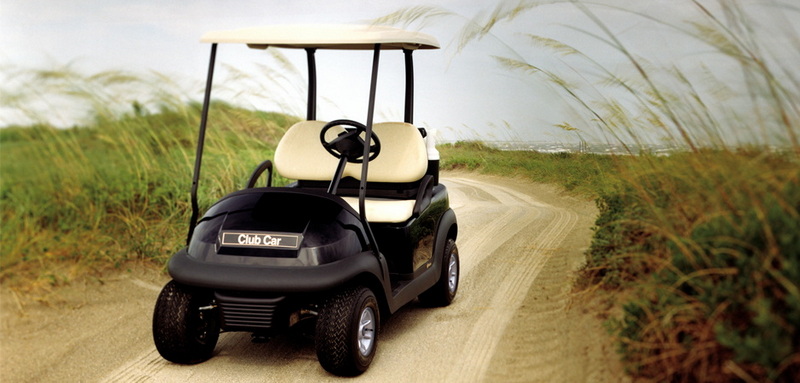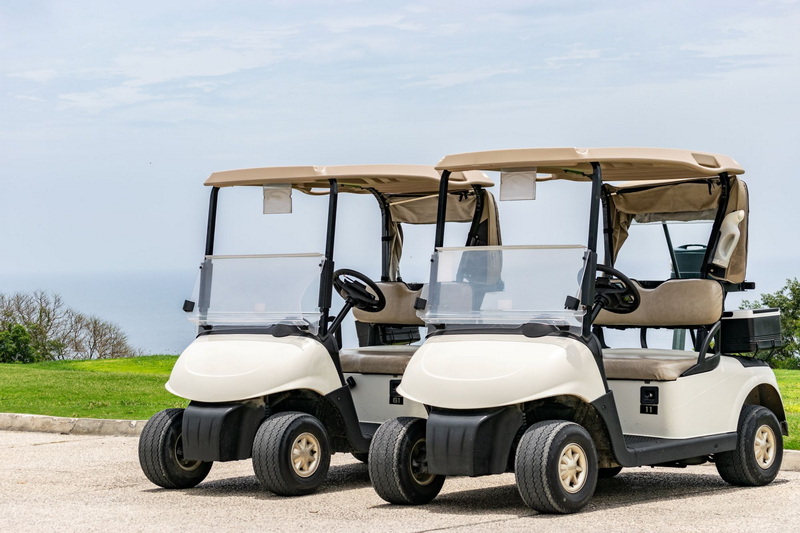Content Menu
● Introduction
● Understanding Golf Cart Gear Ratios
>> What is a Gear Ratio?
>> How Gear Ratios Affect Performance
● Can You Buy Lower Gears for Electric Golf Carts?
>> Available Gear Options
>> Compatibility
● Pros and Cons of Installing Lower Gears
>> Advantages
>> Disadvantages
● Installation Process
● Alternative Performance Upgrades
>> Motor Upgrade
>> Controller Upgrade
>> Battery Upgrade
>> Tire Size Adjustment
● Considerations Before Modifying Your Golf Cart
● How to Determine Your Current Gear Ratio
● Impact on Electric Motor Performance
>> RPM Considerations
>> Torque Output
● Balancing Speed and Torque
● Legal and Safety Considerations
● Maintenance Implications
● Cost Analysis
● Conclusion
● Frequently Asked Questions
>> 1. Will installing lower gears void my golf cart's warranty?
>> 2. How much does it cost to install lower gears in an electric golf cart?
>> 3. Can I switch back to the original gears if I don't like the lower gear ratio?
>> 4. Are there any alternatives to changing gears for increasing my golf cart's speed?
>> 5. How much speed increase can I expect from installing lower gears?
Introduction
Electric golf carts have become increasingly popular for both recreational and practical use. Many owners seek to improve their cart's performance, particularly when it comes to climbing hills or carrying heavy loads. One common question that arises is whether it's possible to buy lower gears for an electric golf cart. In this comprehensive article, we'll explore the world of golf cart gearing, discussing the options available and the impact of gear changes on performance.

Understanding Golf Cart Gear Ratios
Before delving into the specifics of buying lower gears, it's essential to understand what gear ratios mean in the context of golf carts.
What is a Gear Ratio?
A gear ratio in a golf cart refers to the relationship between the number of rotations of the input shaft (connected to the motor) and the number of rotations of the output shaft (connected to the wheels). For example, a common stock gear ratio for many golf carts is 12.5:1, which means the input shaft rotates 12.5 times for every single rotation of the output shaft.
How Gear Ratios Affect Performance
Lower gear ratios (like 6:1 or 8:1) result in higher top speeds but reduced torque, while higher gear ratios (like 12.5:1 or 15:1) provide more torque for climbing hills and carrying heavy loads but limit top speed.
Can You Buy Lower Gears for Electric Golf Carts?
The short answer is yes, you can buy lower gears for most electric golf carts. However, there are several factors to consider before making this modification.
Available Gear Options
Many aftermarket manufacturers produce gear sets with various ratios for popular golf cart models. Common options include:
- 6:1 ratio (high speed)
- 8:1 ratio (balanced speed and torque)
- 12.5:1 ratio (stock for many carts)
- 15:1 ratio (high torque)
Compatibility
When shopping for new gears, it's crucial to ensure compatibility with your specific golf cart model and year. Different manufacturers and models may have varying rear axle designs, so always check the specifications before purchasing.
Pros and Cons of Installing Lower Gears
Advantages
1. Increased top speed
2. Improved performance on flat terrain
3. Potential for better energy efficiency at higher speeds
Disadvantages
1. Reduced torque for hill climbing
2. Decreased acceleration from a standing start
3. Potential strain on the motor and controller
Installation Process
Installing new gears in a golf cart is a complex process that typically requires specialized tools and knowledge. Here's a general overview of the steps involved:
1. Remove the rear wheels and brake assemblies
2. Drain the differential fluid
3. Remove the differential cover
4. Extract the existing gears
5. Install the new gear set
6. Reassemble the differential and refill with fluid
7. Reinstall brake assemblies and wheels
Alternative Performance Upgrades
While changing gears can improve certain aspects of performance, it's not the only option for enhancing your golf cart's capabilities. Consider these alternatives:
Motor Upgrade
Installing a higher-powered motor can provide both increased speed and torque without sacrificing low-end performance.
Controller Upgrade
A more advanced controller can offer better power management and potentially unlock higher top speeds.
Battery Upgrade
Switching to higher voltage batteries or lithium-ion batteries can improve overall performance and range.
Tire Size Adjustment
Changing tire size can affect your cart's effective gear ratio without the need for internal modifications.
Considerations Before Modifying Your Golf Cart
Before deciding to purchase and install lower gears or make any significant modifications to your golf cart, consider the following:
1. Intended use (recreational, work-related, off-road)
2. Local regulations regarding golf cart modifications
3. Warranty implications
4. Safety concerns, especially if increasing top speed
5. Overall cost of modifications vs. benefits gained
How to Determine Your Current Gear Ratio
If you're unsure about your golf cart's current gear ratio, you can use this simple method to find out:
1. Jack up one side of the cart so the wheel can spin freely
2. Mark a spot on the wheel and the input shaft
3. Rotate the wheel one full revolution
4. Count how many times the input shaft rotates
5. Multiply this number by two to get your gear ratio
Impact on Electric Motor Performance
When considering a gear change, it's important to understand how it will affect your electric motor's performance:
RPM Considerations
Lower gears will cause the motor to spin at higher RPMs to achieve the same wheel speed. This can lead to:
- Increased wear on motor components
- Potential overheating issues
- Reduced motor lifespan if not properly managed
Torque Output
While lower gears increase top speed, they also reduce the torque available at the wheels. This means:
- Decreased ability to climb steep hills
- Reduced towing capacity
- Slower acceleration from a stop
Balancing Speed and Torque
Finding the right balance between speed and torque is crucial when selecting new gears. Consider your typical driving conditions:
- Flat terrain with long distances? Lower gears might be ideal.
- Hilly areas or frequent heavy loads? Stick with higher gear ratios.
Legal and Safety Considerations
Before modifying your golf cart with lower gears, be aware of the legal and safety implications:
1. Check local laws regarding golf cart speed limits
2. Ensure your cart's braking system can handle increased speeds
3. Consider installing additional safety features like seat belts or a roll cage
4. Be mindful of the increased stopping distance at higher speeds
Maintenance Implications
Installing lower gears may affect your golf cart's maintenance needs:
- More frequent oil changes in the differential
- Increased wear on brake components
- Potential need for more robust suspension components
Cost Analysis
When deciding whether to purchase lower gears, consider the following costs:
1. Price of the gear set (typically $200-$500)
2. Installation costs if not doing it yourself
3. Potential costs of additional upgrades to support the modification
4. Long-term maintenance costs
Compare these expenses to the benefits you expect to gain from the modification.
Conclusion
Buying lower gears for an electric golf cart is indeed possible and can be an effective way to increase top speed. However, it's crucial to weigh the pros and cons carefully before making this modification. Consider your specific needs, driving conditions, and the potential impact on your cart's overall performance and longevity. Remember that changing gears is just one of many possible upgrades, and a holistic approach to performance enhancement may yield better results.

Frequently Asked Questions
1. Will installing lower gears void my golf cart's warranty?
In many cases, modifying your golf cart's drivetrain can void the manufacturer's warranty. It's essential to check your warranty terms or consult with the manufacturer before making any significant modifications.
2. How much does it cost to install lower gears in an electric golf cart?
The cost can vary widely depending on the specific gear set and whether you install it yourself or hire a professional. On average, expect to spend between $300 and $800 for parts and labor.
3. Can I switch back to the original gears if I don't like the lower gear ratio?
Yes, you can typically revert to the original gears. However, keep in mind that this will involve another complete gear replacement process, including additional costs and labor.
4. Are there any alternatives to changing gears for increasing my golf cart's speed?
Yes, alternatives include upgrading the motor, controller, or batteries, as well as modifying the cart's weight or aerodynamics. Each option has its own set of pros and cons to consider.
5. How much speed increase can I expect from installing lower gears?
The speed increase depends on various factors, including the specific gear ratio change, motor power, and cart weight. Generally, changing from a 12.5:1 ratio to a 6:1 ratio could potentially increase top speed by 30-50%, but this can vary significantly based on other factors.









































